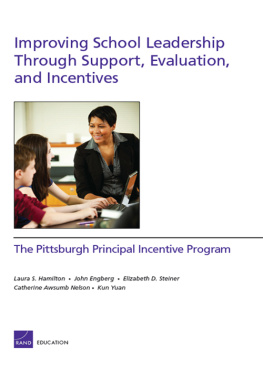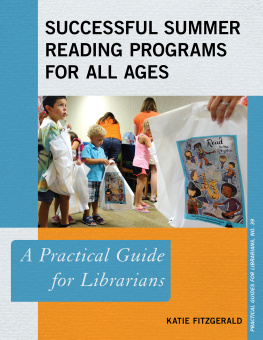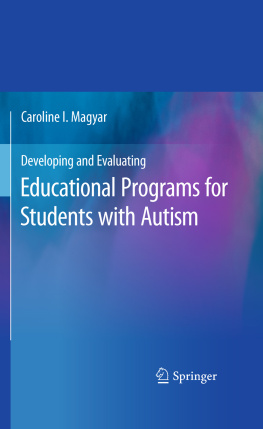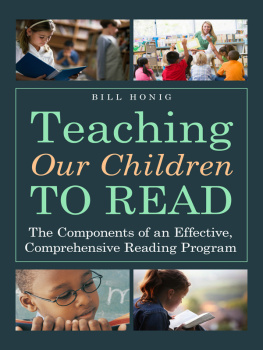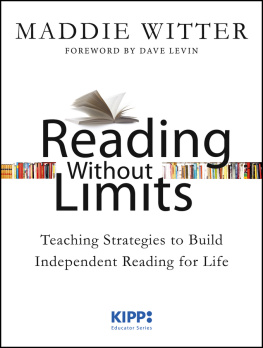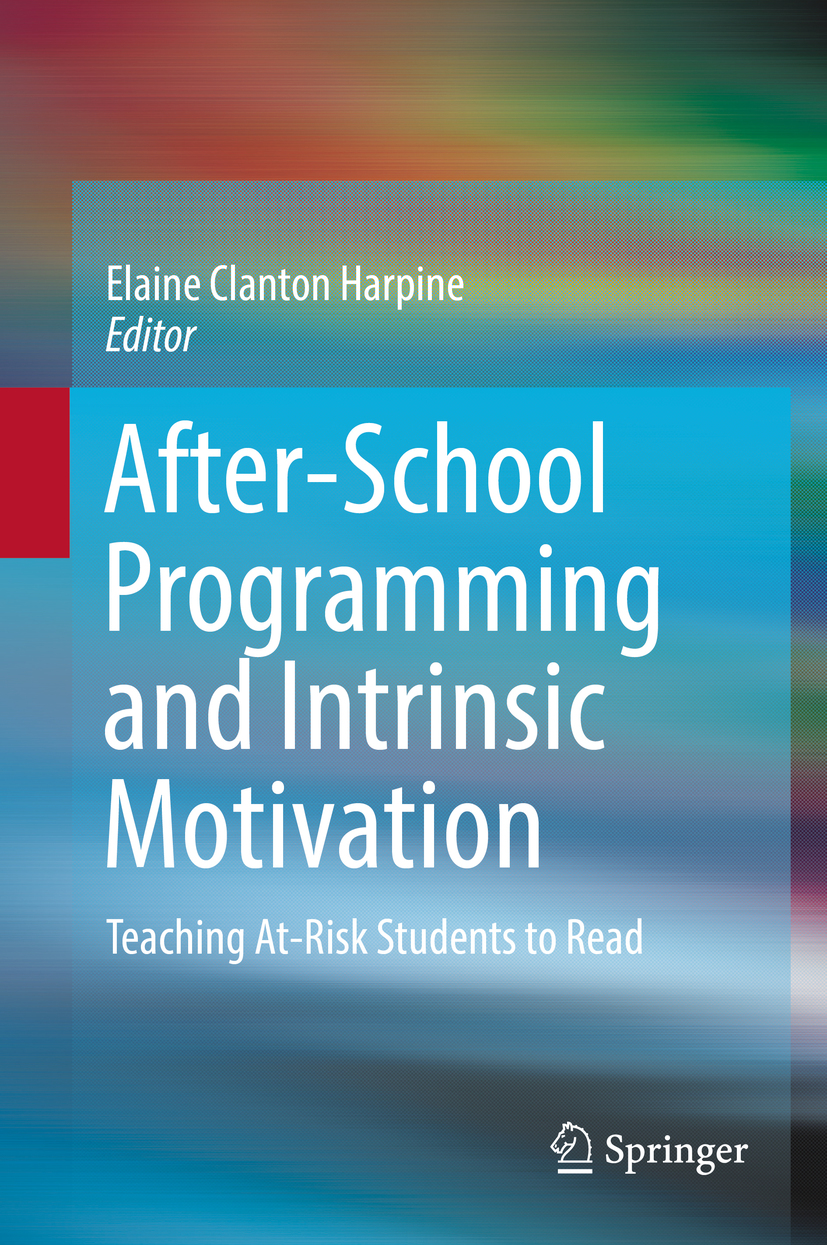Editor
Elaine Clanton Harpine
After-School Programming and Intrinsic Motivation Teaching At-Risk Students to Read
Editor
Elaine Clanton Harpine
University of South Carolina Aiken, Aiken, SC, USA
ISBN 978-3-030-22844-6 e-ISBN 978-3-030-22845-3
https://doi.org/10.1007/978-3-030-22845-3
Springer Nature Switzerland AG 2019
This work is subject to copyright. All rights are reserved by the Publisher, whether the whole or part of the material is concerned, specifically the rights of translation, reprinting, reuse of illustrations, recitation, broadcasting, reproduction on microfilms or in any other physical way, and transmission or information storage and retrieval, electronic adaptation, computer software, or by similar or dissimilar methodology now known or hereafter developed.
The use of general descriptive names, registered names, trademarks, service marks, etc. in this publication does not imply, even in the absence of a specific statement, that such names are exempt from the relevant protective laws and regulations and therefore free for general use.
The publisher, the authors, and the editors are safe to assume that the advice and information in this book are believed to be true and accurate at the date of publication. Neither the publisher nor the authors or the editors give a warranty, express or implied, with respect to the material contained herein or for any errors or omissions that may have been made. The publisher remains neutral with regard to jurisdictional claims in published maps and institutional affiliations.
This Springer imprint is published by the registered company Springer Nature Switzerland AG
The registered company address is: Gewerbestrasse 11, 6330 Cham, Switzerland
To my loving husband, Bill, for your never-failing devotion, my dear friend and editor, Judy Jones, for encouraging me to write this book, and to every child who learned to read at the Reading Orienteering Club.
Preface
Before starting first grade, a kindergarten student missed every word on the sight word list from kindergarten and would not even attempt to read an oral passage from the pre-primer (below kindergarten) test. When tested at the midpoint in first grade, the student had completely given up and wouldnt even try to read the words on the assessment sheet. The student was convinced that he would never be able to learn to read and said so. At the end of first grade, the student could only read four words from the pre-primer list. His oral passage score remained the same at the end of first grade as his score from kindergarten. The student could not read one single word from the story, even though the child had been receiving one-on-one, pullout tutoring at school after the midpoint testing period in the classroom. The summer after first grade, the student was placed in my Camp Sharigan 1-week reading program. After only 1 week of instruction at Camp Sharigan, the student read the pre-primer story and moved up two levels in sight words as well as in reading oral passages.
Yes, the method that we use to teach children to read can make the difference between the students success and failure in learning to read. The student in our opening example demonstrated that group-centered methods are successful but that this student and others would also need more than a 1-week group-centered intervention. This student needed a year-long after-school group-centered program. Years later, the Reading Orienteering Club was the result.
This book is based on 18 years of research with at-risk students and follows the 8-year development of the Reading Orienteering Club after-school program, showing how to develop, test, change, and adapt an after-school program to fit the needs of the children who attend. The book includes case study examples and data reports for each year. The advantage of this book is that it presents the theory, the application, and the program evaluation steps that faculty developing field experiences, service-learning projects, and clinics need to establish their own program. Many books just present theory or give generalized examples. This book is written specifically for professors who want to create a laboratory, service learning, or field experience for their students and for practitioners who work with after-school programs and want to create a more successful program. Easy-to-read language ensures that volunteers as well as professionals and students can read and understand every programming detail.
Since many of the program helpers were university students, this book also shows how service learning can be used in the college classroom to teach students theoretical textbook principles and to give college students hands-on service-learning opportunities to help a community meet its needs. Undergraduate and graduate students alike can benefit when they work in a service-learning situation that creates a learning laboratory that gives them personal experience working with an at-risk population. I have also used this program with high school students as workstation helpers. It is especially appropriate for students who may be thinking about a career in psychology or education. In psychology, undergraduate university students are often not permitted to work in human clinical settings, but a prevention group, such as the Reading Orienteering Club , provides a safe learning environment in which high school and undergraduate as well as graduate students may work and train. The same is true in education. Most high school or university students are not allowed to teach until the final year of their training. With a program like the Reading Orienteering Club , high school students and undergraduates can experience real-world teaching in a classroom-like setting and learn to work with at-risk students with special needs. The Reading Orienteering Club becomes a community-based learning laboratory for children seeking to improve their reading skills as well as a learning laboratory for university students who come to work and teach the children. Both educational and counseling techniques are practiced at the Reading Orienteering Club .
All chapters are written by people who worked in the Reading Orienteering Club after-school program, so the authors present first-person accounts as well as statistical evaluations of the reading programs effectiveness with each group of children.
The Camp Sharigan Project was an 8-year developmental project between the community and the university. Different people worked on the team throughout the 8 years, but each person was essential to the success of the project. Different team members analyzed and reported data from different years, reported in different chapters. From the very first day, it was a team project. As the chapter titles specify, we explored different questions each year, but our central goal was to bring children up to their age level in reading. Each year began with the week-long Camp Sharigan reading clinic followed by the 8-month Reading Orienteering Club.
Chapter also explains how a university professor and/or community leader can set up this type of reading program, staffed and operated by either students or volunteers.
This book shows university service-learning project leaders and practitioners how to conduct program evaluation and make the necessary adjustments to a program based on the statistical findings of the evaluation. Like my other books, this book uses examples from the




